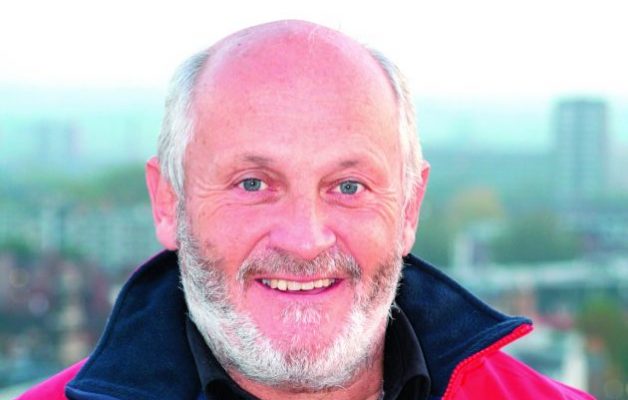Dick Durham June podcast: Don’t get bogged down while making your own charts, especially when the tide’s flooding, as Dick finds out...
“The ooze had swallowed my boots. I was stuck in a quagmire of East Coast mud, 300 yards offshore”
It’s an isolated spot, just a few cows grazing on marshland behind a lonely sea wall, the seaward side of which has few features save for a little stone cairn on the saltings. There was, therefore, no-one to witness my predicament: I was stuck in a quagmire of East Coast mud, 300 yards offshore. The ooze had swallowed my kneeboots and although the tide was still ebbing in the gully of my entrapment, it had slowed. Out in the river I noticed a distant anchored ship was slowly swinging its bows to the east. The tide was returning.
It had started harmlessly enough: a mission to make my own chart of a forgotten creek in the Thames Estuary. Yantlet Creek is not marked in anyway with the exception of one ancient, unlit beacon, known locally as the Black Widow, because its dark upperworks comprise a large ball, the head, on top of a skirt-shape, the body.
This beacon simply tells the passing sailor – half a mile away in the river – that this fissure of north Kent exists. It in no way helps with navigation as it marks neither the entrance nor any other aspect of this marshy backwater. I set off with notebook, pencil, hand-bearing compass and camera, down the weedy ragstone of the sea wall and out onto the mud. My plan was to pace out the distance to the beacon itself, take some bearings towards the creek mouth, and also measure the height of the beacon’s legs to produce a makeshift tidal gauge.
The mud was soft from the outset, but I was sure it would firm up further offshore and pressed on. ‘It’s not that far,’ I said to myself.
I tried stepping from ridge to ridge across the ribbed mud. The higher, brownish patches appeared harder, drier, firmer. But they were the opposite. And so I followed the wetter rivulets which were marginally firmer but which meant a circuitous route to the beacon.
I eventually reached the barnacle-encrusted legs and leaned, panting after my exertions, against the nearest timber. The shadow of the latticework steel of the Black Widow was thrown ominously across the sands like a cage. I took some bearings, made a note of the leg’s height: with water lapping the underside of the crossbeam there’d be a good eight feet plus of depth over the sands, which were as flat as out to Sea Reach in the River Thames. I took a couple of photographs and then set off for shore. I’d decided a better route back would be by trekking straight to the creek itself and then into the marshes by following its course.
I had reckoned on the embankment of the creek being firmer than the surrounding ooze, which is often the case. The ribbed mud which lay between the beacon and creek was the same as I’d faced earlier. I squelched across it towards the creek, but to my dismay the mud became softer. It would have to be harder on the creek edge surely? By now my heart was thumping, as I hauled each boot from each glutinous footstep. As I reached the creek edge, my boots sank beyond their rims and as I fought to free one I simply dug the other further in. I couldn’t stand still to get my breath back
as I was simply sinking further into the morass. I could not use my hands to pull out each stuck boot without covering my new camera in mud.
So I left the boots like some incarcerated chrysalises in their respective graves and ploughed back over the crotch-high mud in stockinged feet, like a moth through tar, until collapsing, out of breath on the marsh. It was then I noticed that the cairn on the saltings had a brass plaque. It was inscribed thus:
‘Geoffrey John Hammond. Artist, teacher, naturalist, conservationist. Drowned 2 March 1975 in these waters.’
Dick Durham




